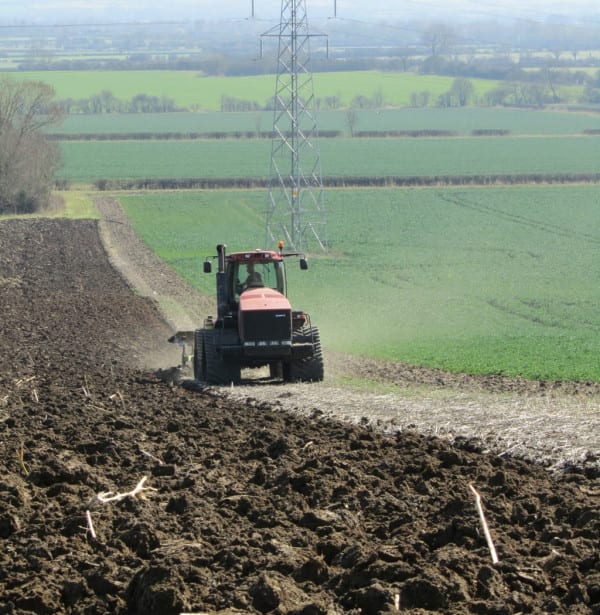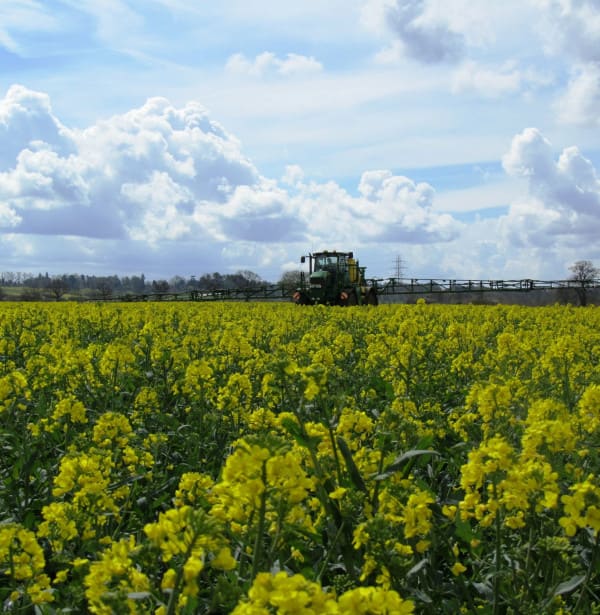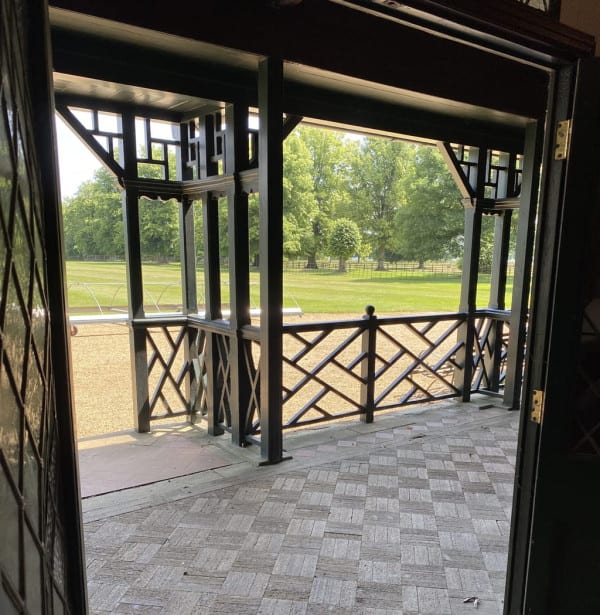The Estate
The Ascott Estate steals your heart as soon as you park. Stroll up the gravel drive. Drink in sweeping views of Aylesbury Vale.
Before you start exploring the gardens at Ascott House, near Wing, consider their 30 acres make up less than 1% of the wider estate. At 4,400 acres, it’s the same size as 2,200 football pitches.

The Farms
Ascott Farms comprises 3,500 acres of farmland in the rolling hills of the Aylesbury Vale. The farm is predominantly arable, growing a mixed of winter and spring cereal crops, Field Beans, Grass and Parkland.
The original farm was bought by Leopold de Rothschild in 1889. Until the late 1990’s the main enterprise of the farm was the Eranda dairy herd. The herd, in excess of 200 Holstein cows, was split between two farm locations, Home Farm and Lower Wingbury Farm.
The arable enterprise was previously in place to support the requirements of the dairy units providing animal feed and straw for bedding, however this has now become the primary activity on the farm.
Today the farm produces several thousand tonnes of Wheat each year, some of which is Milling Wheat and is used as an ingredient for the production of bread, the remaining wheat crop is sold off the farm into the animal feed market. The Field Beans can be sold into the export market for human consumption or the animal feed market. In addition to these crops, a proportion of straw is sold off the farm. Hay is produced on a small scale to feed the horses kept on the Estate.
The farm is spread across three locations with the capacity to store over 5,000 tonnes of grain and store crop inputs and machinery. The farm employs a Contractor, Mentmore Park Farms, to undertake the day-to-day operations across the arable farmland.

Conservation on Ascott Estate
Ascott Farms is committed to a sustainable and environmentally aware approach to farming. Some of the most advanced technologies in machinery are employed to reduce consumption of fertilisers and sprays coupled with variable rate technologies to apply compound fertilisers across the farm allowing for applications to be concentrated where they are most needed and where they will be used to the greatest benefit. Sprays are applied using GPS mapping equipment on the Sprayer, this software controls sections across the width of the boom to turn on and off the sprayer automatically during headland turns to minimise overlaps and provide greater accuracy of application.
Automated steering systems are used within the tractors which can be programmed to steer the tractors while working across the fields to an accuracy of 10 centimetres. This reduces the number of overlaps with each pass of the machine which saves time, reduces labour requirements and the amount of fuel used.
The farm employs a number of minimum tillage crop establishment techniques which also helps to lower the carbon emissions of the farm.

Environmental Schemes
The farm is part of Mid-Tier Countryside Stewardship Scheme. As part of this scheme over 200 acres of arable land in environmentally sensitive areas have been taken out of production. The areas adjacent to hedgerows, ditches and watercourses have been put down to grass buffer strips. A number of field corners have also been sown with wildflower seed mixtures to increase biodiversity and enhance the flora and fauna across the farmland.

Hedgerows & Woodland
There are over 78 kilometres of established hedgerows across the Ascott Estate. The Estate strives to maintain and improve these areas as suitable habitats for nesting birds and other wildlife. Hedges are cut on a two year rotation basis and are cut outside the bird nesting periods.
There are over 290 acres of woodland spread across the Ascott Estate. The woodlands are predominantly comprised of Oak, Ash, Beech, Horse Chestnut and Sycamore. They are under planted with Snowberry, Laurel and Bracken.
New plantations have been established and in addition to the mixed broadleaf trees Larch and Silver Birch have been introduced.

Cricket
Cricket has always played an important part of life at Ascott. The first cricket match was played at Ascott House on the 28th August 1880 and the tradition has been upheld.
The Ascott Park Cricket Ground is surrounded by trees and is among the most attractive private grounds in England where regular matches are played in summer. It is one of a group similar cricket fields, which include those at Arundel Castle in West Sussex and Torry Hill in Kent, where the late Victorian tradition of country-house cricket continues to flourish.
The cricket ground was laid out by Leopold de Rothschild in 1889. The Rothschild family played a prominent role in the formation of Buckinghamshire County Cricket Club. Buckinghamshire County Cricket Club, formed in 1891, first played at the Ascott Park Cricket Ground in the 1905 Minor Counties Championship against Hertfordshire and continued to play there regularly once a season until 1979. The County first team returned to Ascott Park in 1998 to play a one-day fixture and subsequently held a three day match in June 2002. It is now the host to County junior age-groups from u11 up to u18 teams.
Today, Ascott Park Cricket Ground is home to the village cricket team from Great Brickhill, who play in the Cherwell Cricket League, as well as other teams from all over the UK and some overseas touring teams.
In total there are 30-40 fixtures played during the cricket season.

Coronation Cup
The Coronation Cup, founded in 1953, is a midweek competition for local village clubs. Both the semi-finals and the final are staged at Ascott Park Cricket Ground.
The competition was one of the first limited overs competitions to be played in the country. Stewkley Vicarage and Long Marston Cricket Club have won the trophy on more occasions that the other participants and Edlesborough Cricket Club won the 50th Anniversary competition in 2003.


